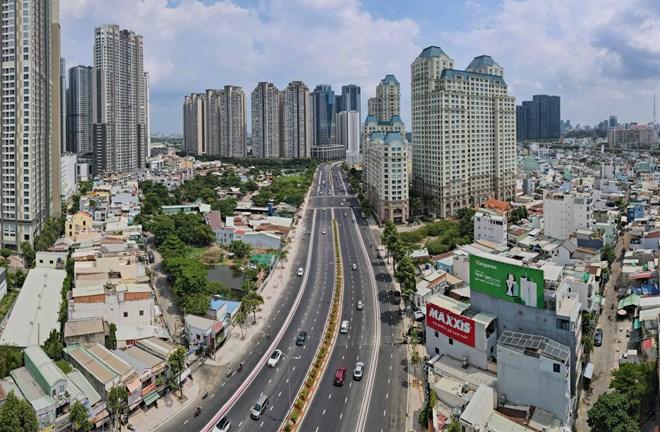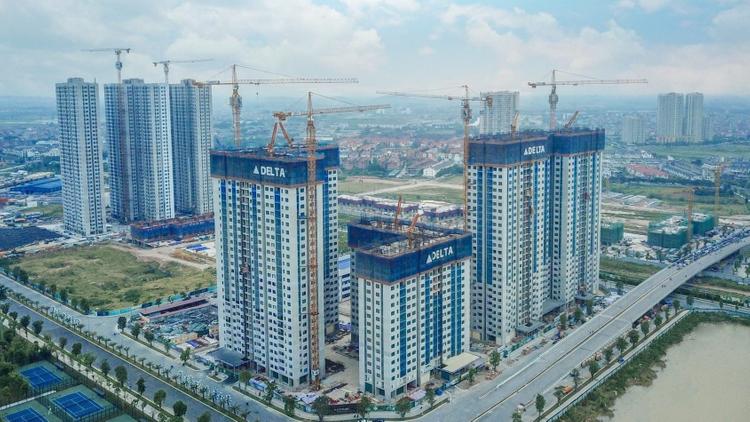Prices have increased beyond the affordability of the majority of the population, but the absorption rate in the market is still positive at 70-80%. Ms. Pham Thi Mien – Deputy Director of the Vietnam Institute for Real Estate Market Research and Evaluation pointed out the instability that the Vietnamese real estate market is facing.
Table of Contents
High Prices Pose Many Uncertainties
According to Ms. Mien, real estate prices in major cities are escalating at a dizzying speed, far exceeding the actual market value. Most newly launched projects have prices above 100 million VND/m2 – a price beyond the reach of low-income people. Transactions mainly come from secondary investors, who bet on the expectation that prices will continue to rise or see real estate as a safe haven.

This price increase is not only due to the imbalance between supply and demand, but is also affected by a series of other factors such as capital costs, land policies, and fluctuations in market psychology. This situation is becoming a hot spot that the Government and management agencies are particularly concerned about. Many solutions have been studied and opinions have been sought to gradually “cool down” housing prices, bringing the market back to a healthy orbit.
Ms. Mien emphasized that if this situation is not controlled soon, the real estate market is at risk of becoming unstable, undermining investor confidence and hindering the goal of sustainable economic development.
Supply and Demand Imbalance
According to Ms. Mien, the real estate market is still in a state of “severe shortage of goods”, when most of the supply is products formed in the future, while the real demand is increasing rapidly. In Hanoi and Ho Chi Minh City alone, if it is estimated that half of the population increases each year with housing needs, these two cities will need more than 212,000 new apartments each year. However, the total new supply nationwide in 2024 – although considered to have recovered significantly – will only reach about 84,000 units, or less than 40% of the demand of these two economic locomotives.
The supply structure is also seriously unbalanced: the market is flooded with high-end projects, while the affordable housing segment – which meets most real needs – is scarce. This imbalance not only makes the dream of owning a home more distant for millions of people, but also puts great pressure on the urban housing market.
In that context, the need to quickly unblock the supply, especially the supply of affordable housing, has become an urgent requirement. To do so, it is necessary to completely resolve the long-standing “bottlenecks” such as complicated legal procedures, high land use costs and barriers that cause project development costs to continuously increase. Only then can the market rebalance and move towards sustainable development.
Real Estate Credit Continues to Increase
The Deputy Director of the Vietnam Institute for Real Estate Market Research and Evaluation emphasized that outstanding real estate credit is increasing at a rate far exceeding the average of the entire economy, mainly focusing on loans serving project business activities – a consequence of the corporate bond channel still not recovering after a period of stagnation.
The amount of “cheap” money, preferential interest rate policies and long principal grace periods have added heat to the market, stimulating real estate demand and promoting a wave of investment to seize opportunities. At the same time, the continuously rising real estate prices have inadvertently created conditions for credit expansion, when the value of collateral assets – mostly real estate – is pushed up significantly.
However, this picture is fraught with risks. If credit policy is tightened, home buyers will immediately face great pressure from interest costs, while project developers may be forced to “freeze” their implementation plans due to lack of capital. This scenario will not only reduce market liquidity but may also delay the recovery of the entire real estate industry.
Distributed, Unsynchronized and Transparency Information
One shortcoming of the Vietnamese real estate market that Ms. Mien mentioned is that the data system on housing and the real estate market is still fragmented, inconsistent and not updated regularly. Notably, Vietnam still does not have an official database on real estate prices – a key factor to properly assess market value.

Information on planning and the list of projects eligible for sale of future housing projects… has not been made public and transparent, making it difficult for people and investors to access. On the contrary, many real estate businesses have not yet fully fulfilled their information disclosure obligations, and are dishonest and lacking in detail in providing project data. Along with that, the current legal framework still leaves open specific regulations on the authority and responsibility of businesses to disclose information.
This lack of transparency is becoming a major bottleneck in the market. It not only creates a breeding ground for speculation and price manipulation, but also puts home buyers at risk and reduces the effectiveness of state management and administration. A sustainable market cannot operate in the shadow of information.
